“The Romance of the West Chamber” Woodblock Prints (西厢记版画 / Xī Xiāng Jì Bǎnhuà)
—A Ming Dynasty Masterpiece of Theatrical Illustration (1637–1644)
Overview
This 21-panel woodblock print series, housed in the Museum of East Asian Art in Cologne, Germany, is the pinnacle of Chinese narrative illustration from the late Ming Dynasty. Created by Min Qiji (闵齐伋, 1580–1662)—a visionary publisher and artist—it visually reimagines The Romance of the West Chamber (西厢记), China’s most celebrated Yuan Dynasty (1271–1368) romantic drama. Combining six-color split-block printing (饾版) with surreal compositional innovations, it transforms Wang Shifu’s poetic script into a visual symphony of love, intrigue, and metaphysical symbolism.
Full Translation & Cultural Context
Album Preface
Translated from Classical Chinese:
“These prints, commissioned by Min Qiji in the 13th year of Chongzhen (1640), capture the essence of Wang Shifu’s drama through the lens of Zen philosophy. By merging theatrical scenes with alchemical symbolism—from revolving lanterns to puppet theater—Min transcends mere illustration to question the boundaries between reality and illusion, desire and enlightenment. As the colophon declares: ‘What is truth? What is fantasy? Truth resides within fantasy; fantasy reveals hidden truths.’“
Panel Descriptions with Artistic Innovations
- 卷首: 莺莺像 (Portrait of Yingying)
- Translation: A maiden holding a silk fan, framed by floral borders. The inscription “Painted by Sheng Mao of Jiahe” references a fictional Yuan artist, blending historical homage with Ming aesthetics.
- Symbolism: The fan symbolizes fleeting youth; peonies in the border represent forbidden passion.
- 图一: 张生初宿普救寺 (Zhang Sheng Arrives at Pujiu Temple)
- Translation: Rendered as a handscroll, this scene uses telescopic perspective to compress temple architecture into layered planes. The seal 寓五筆授 (“Brushwork by Yu-Wu”) marks Min’s artistic alter ego.
- 图三: 隔墙酬韵 (Poetic Exchange Through the Wall)
- Translation: Two butterflies—symbolizing lovers—flutter above poems inscribed on leaves. Zhang’s verse appears on a wu tong leaf (symbolizing loneliness), Yingying’s on osmanthus (foreshadowing marital bliss).
- 图五: 白马解围 (White Horse General’s Rescue)
- Translation: A revolving lantern (走马灯) depicts General Du Que chasing rebel Sun Feihu. The spinning motion mirrors the cyclical nature of conflict, while lantern tassels evoke temple prayer flags.
- 图十九: 郑恒骗婚 (Zheng Heng’s Deceptive Proposal)
- Translation: Presented as a puppet show (傀儡戏), this meta-theatrical device critiques societal hypocrisy. The puppeteer’s hidden hands symbolize fate manipulating human desires.
Technical Brilliance
- Six-Color Split-Block Printing (饾版): Min used 54 carved blocks per print to achieve gradients mimicking ink washes. For the peonies in Panel 1, 12 blocks created petals’ pink-to-white transitions.
- Perspective Systems:
- Reverse Perspective in Panel 7’s banquet table, where objects enlarge with distance, reflects Daoist “inward gaze” philosophy.
- Mirror Reflections in Panel 10 show Yingying’s face doubled—a Buddhist metaphor for ego illusion.
- Material Alchemy: Gold leaf underprinting in Panel 20’s celestial beings mimics Tang Dynasty Buddhist murals, while malachite greens reference Ming porcelain glazes.
Philosophical Framework
Min infused Zen concepts into visual grammar:
- Water Symbolism: Ripples in Panel 11’s moonlit pond (张生跳墙) mirror the lovers’ turbulent emotions.
- Cosmological Diagrams: Panel 4’s astrological compass (六壬式盘) maps romantic destiny onto celestial patterns.
- Chan (Zen) Paradox: The empty bridal bed in Panel 13 (欢会) surrounded by dense curtains questions attachment to physical love.
Global Legacy
- European Influence: Jesuit missionaries brought copies to Paris in 1698, inspiring Rococo chinoiserie textiles. Voltaire praised Panel 14’s lantern interrogation as “Eastern chiaroscuro”.
- Modern Revival: Digital recreations were featured in the 2024 Venice Biennale’s China: 8,000 Layers of Illusion exhibition.
Digital Access
High-resolution scans are available via the Museum of East Asian Art Cologne: https://www.museenkoeln.de.

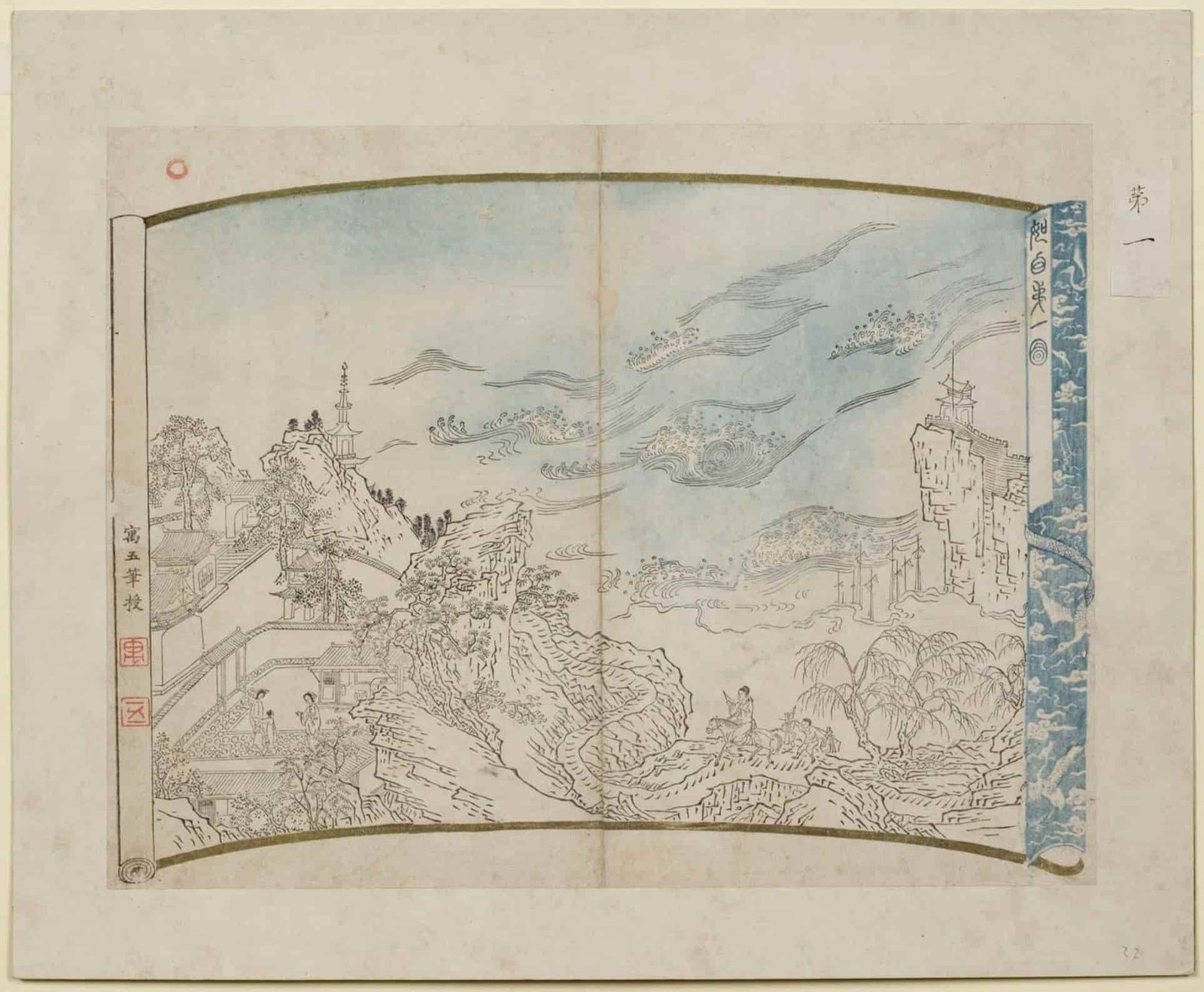
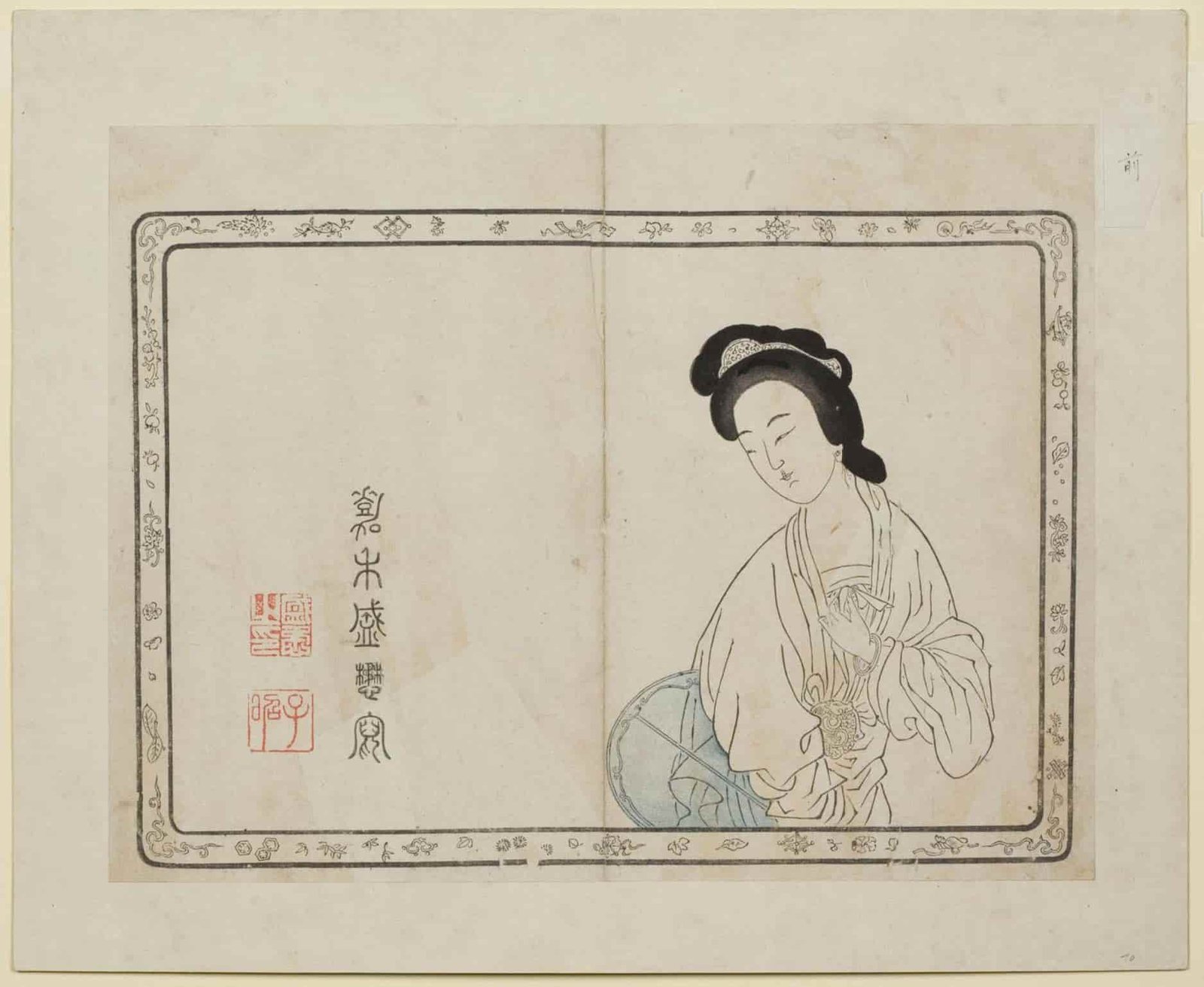
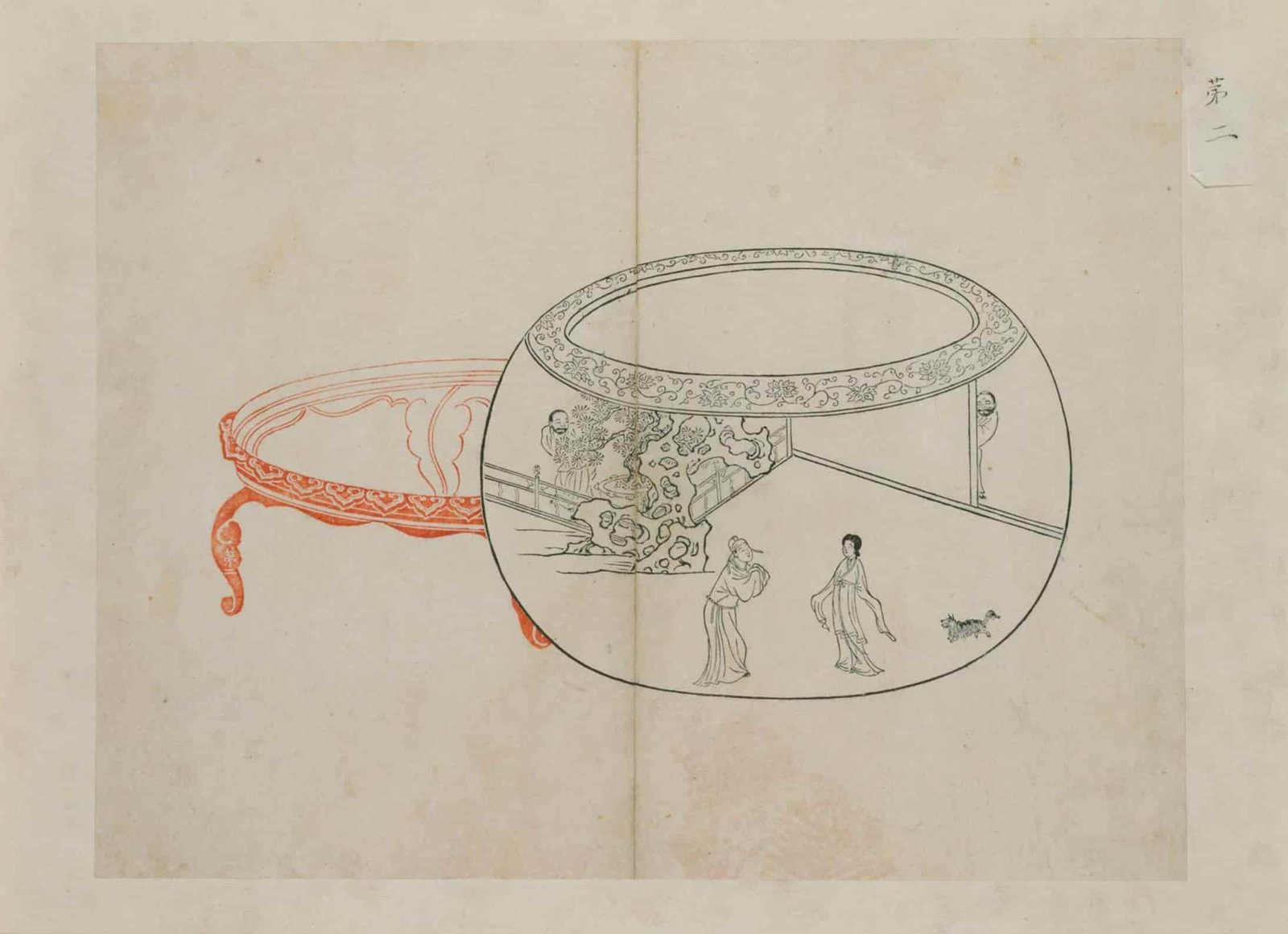
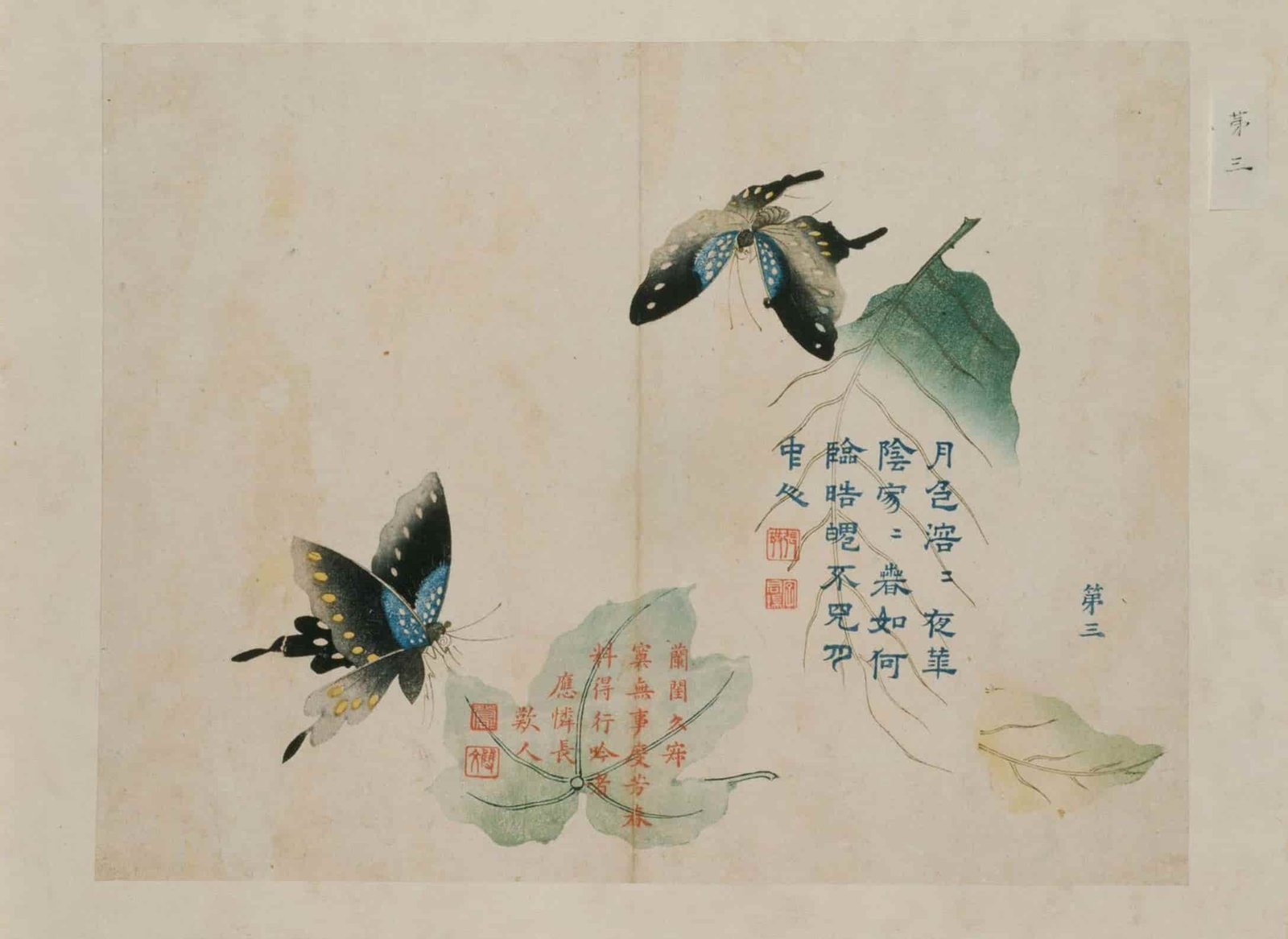
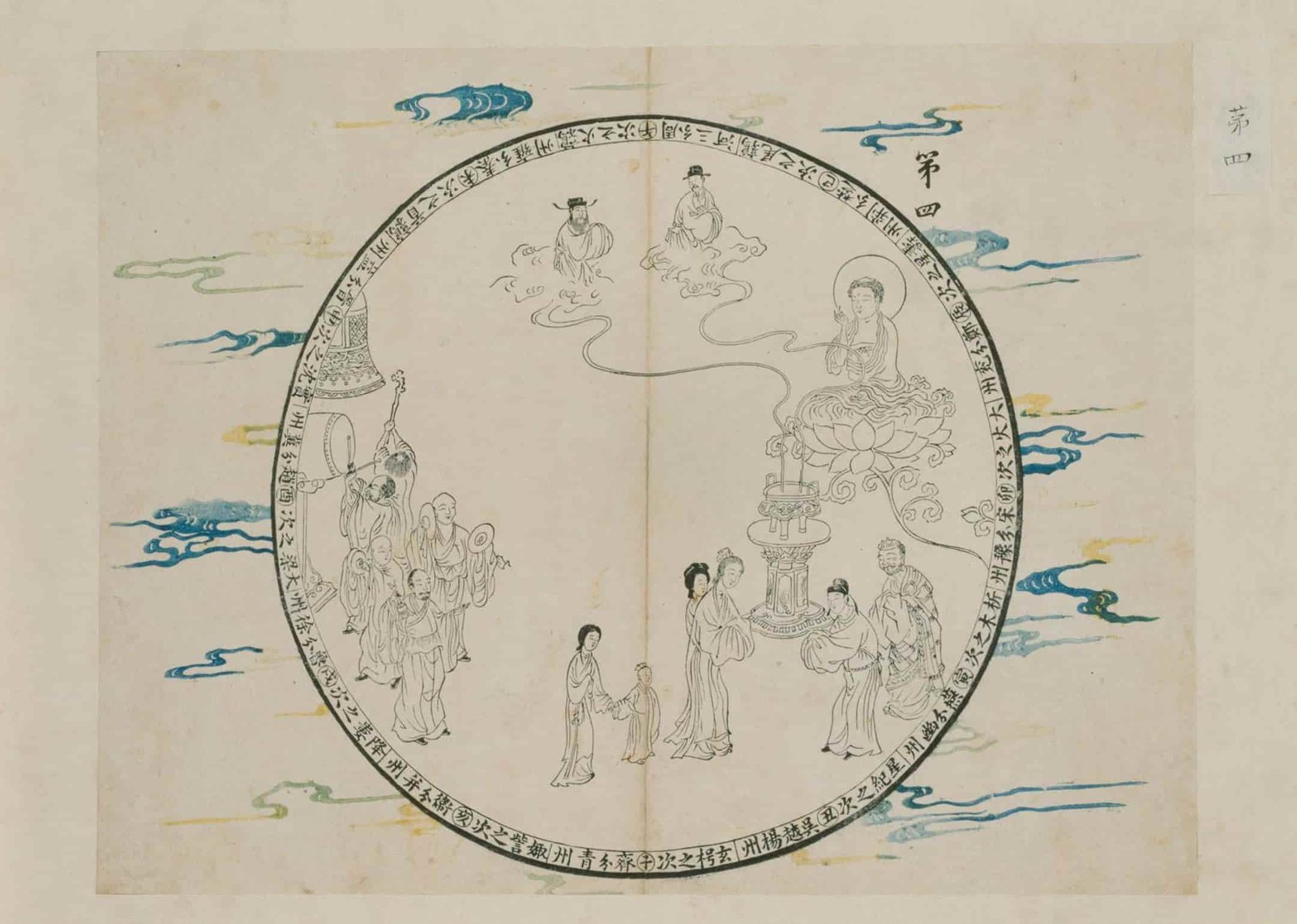
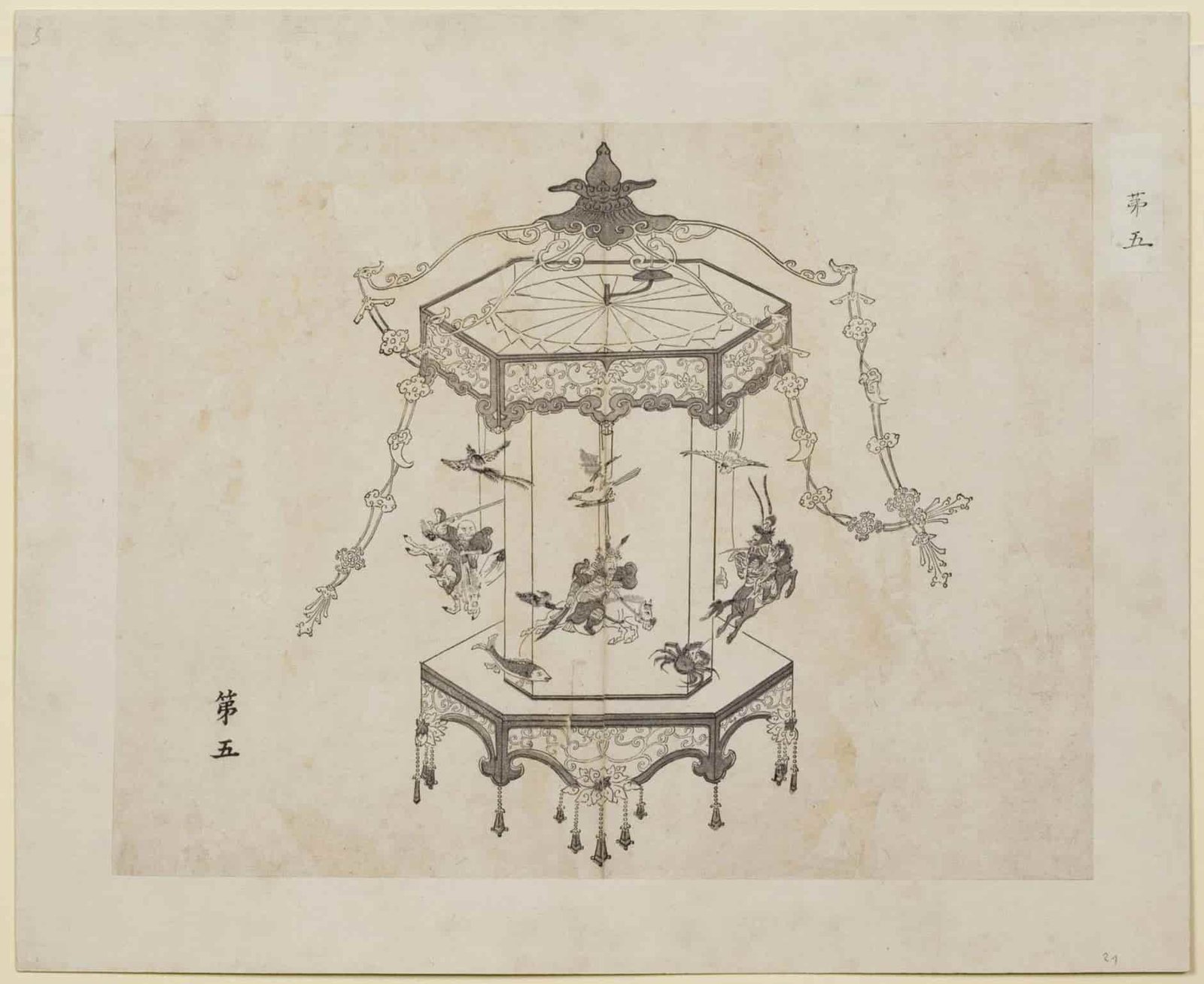
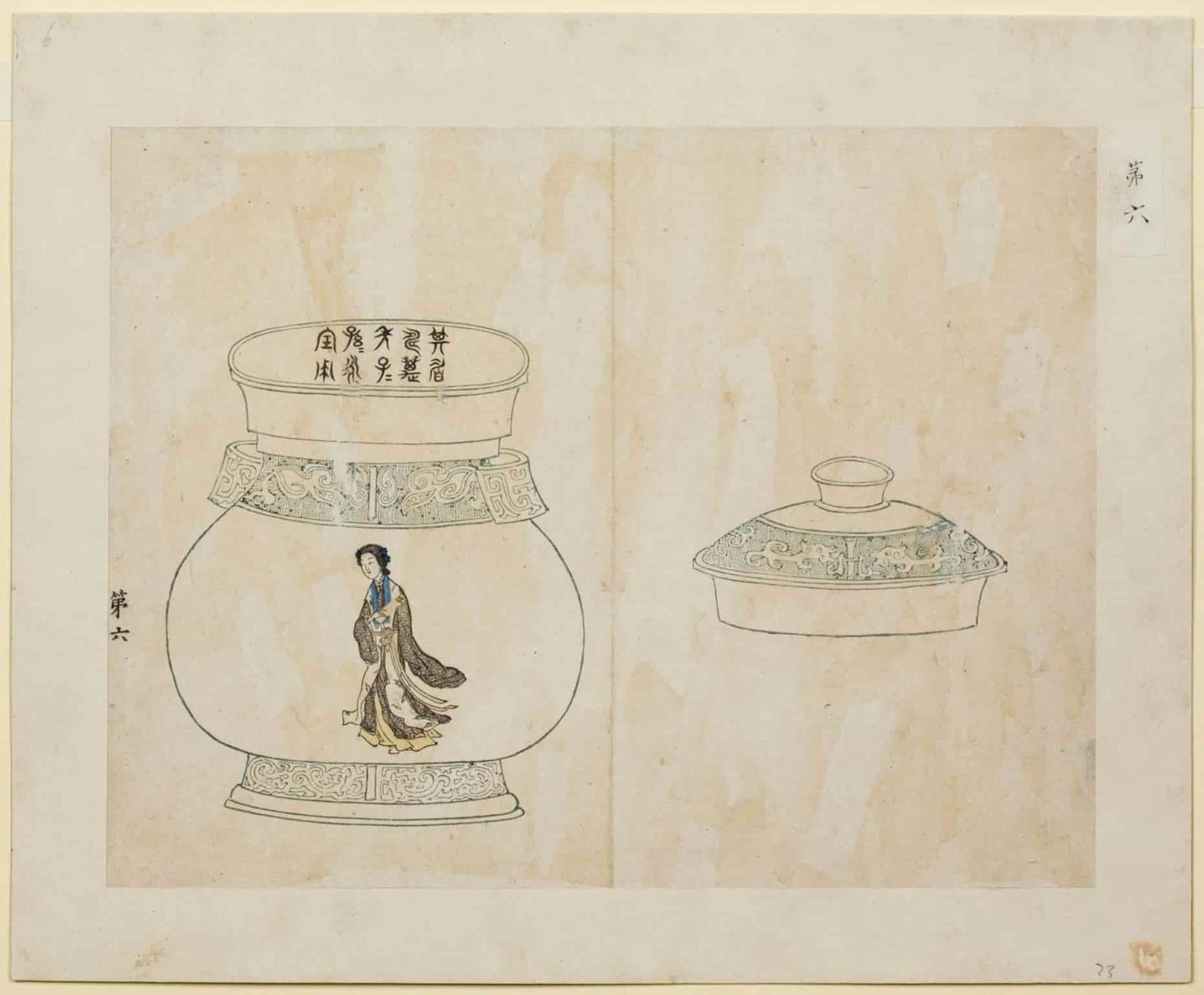
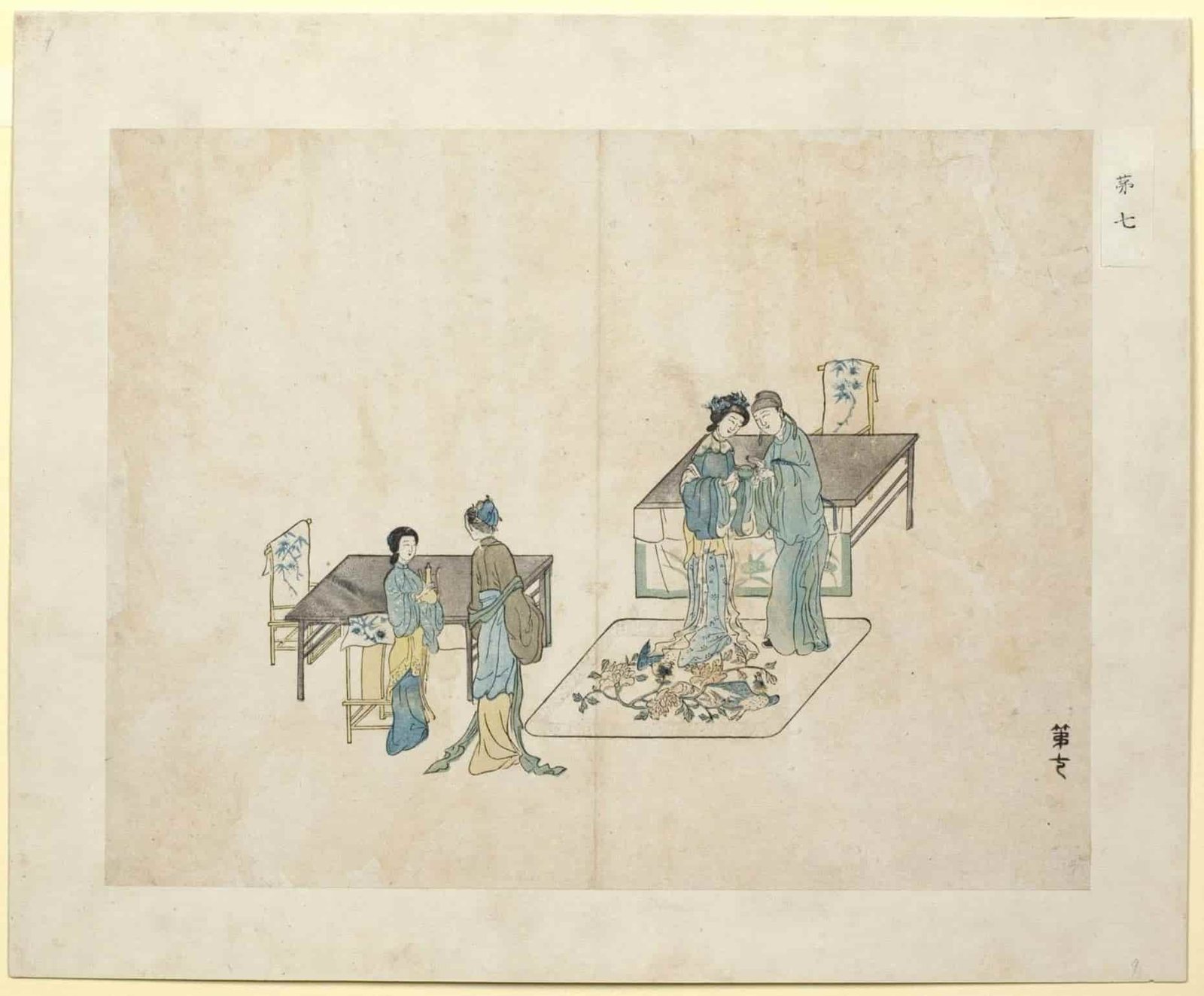
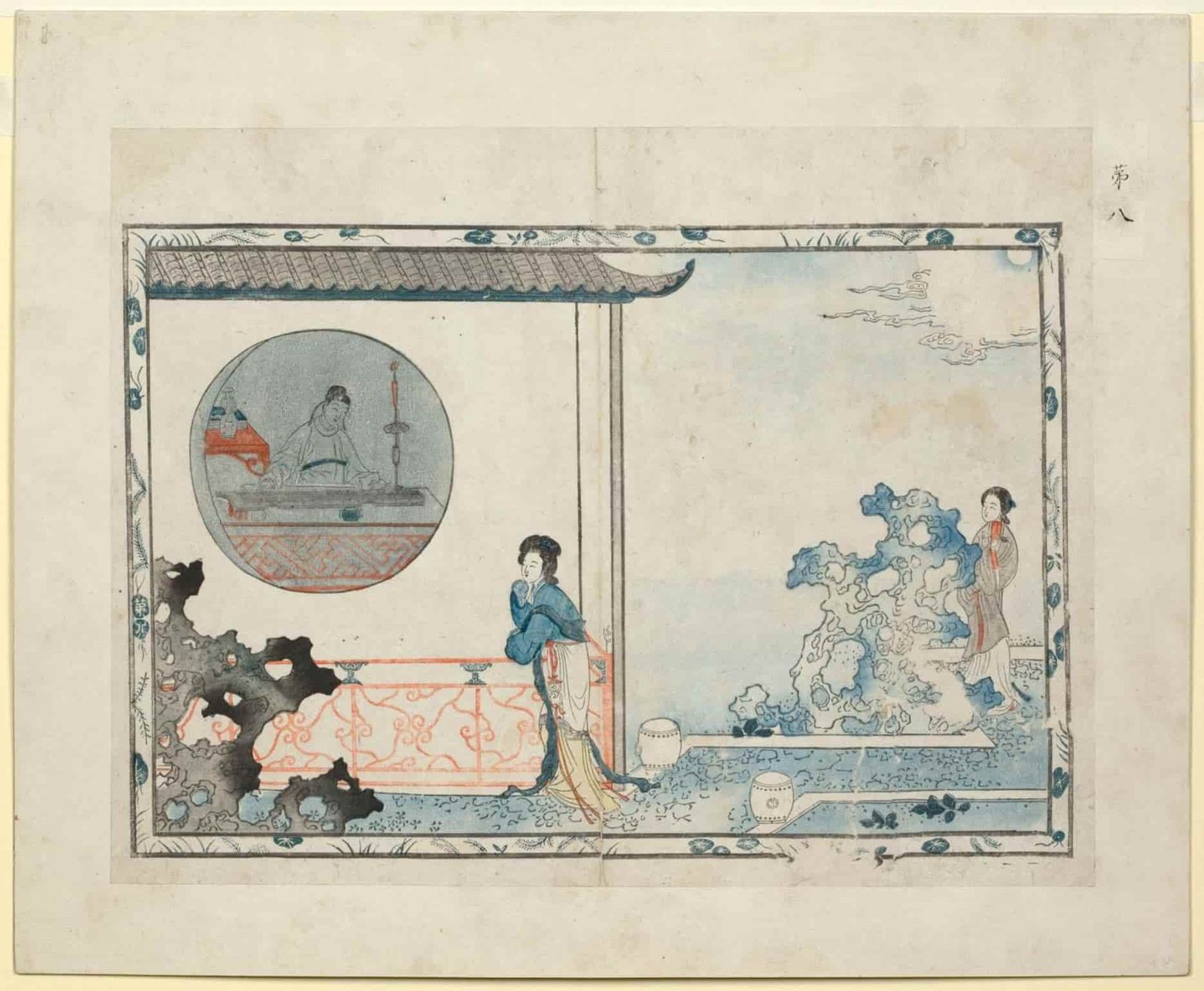
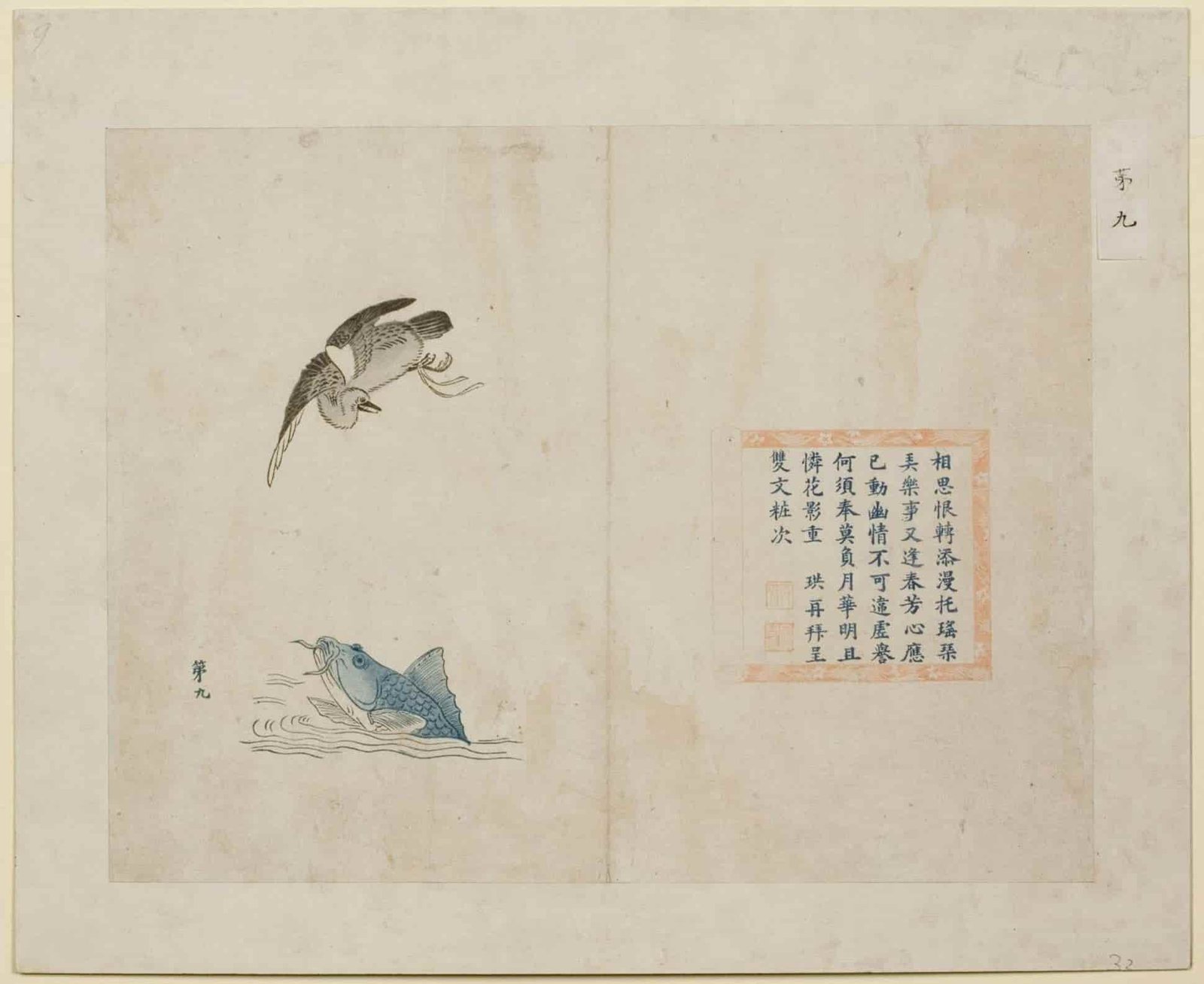
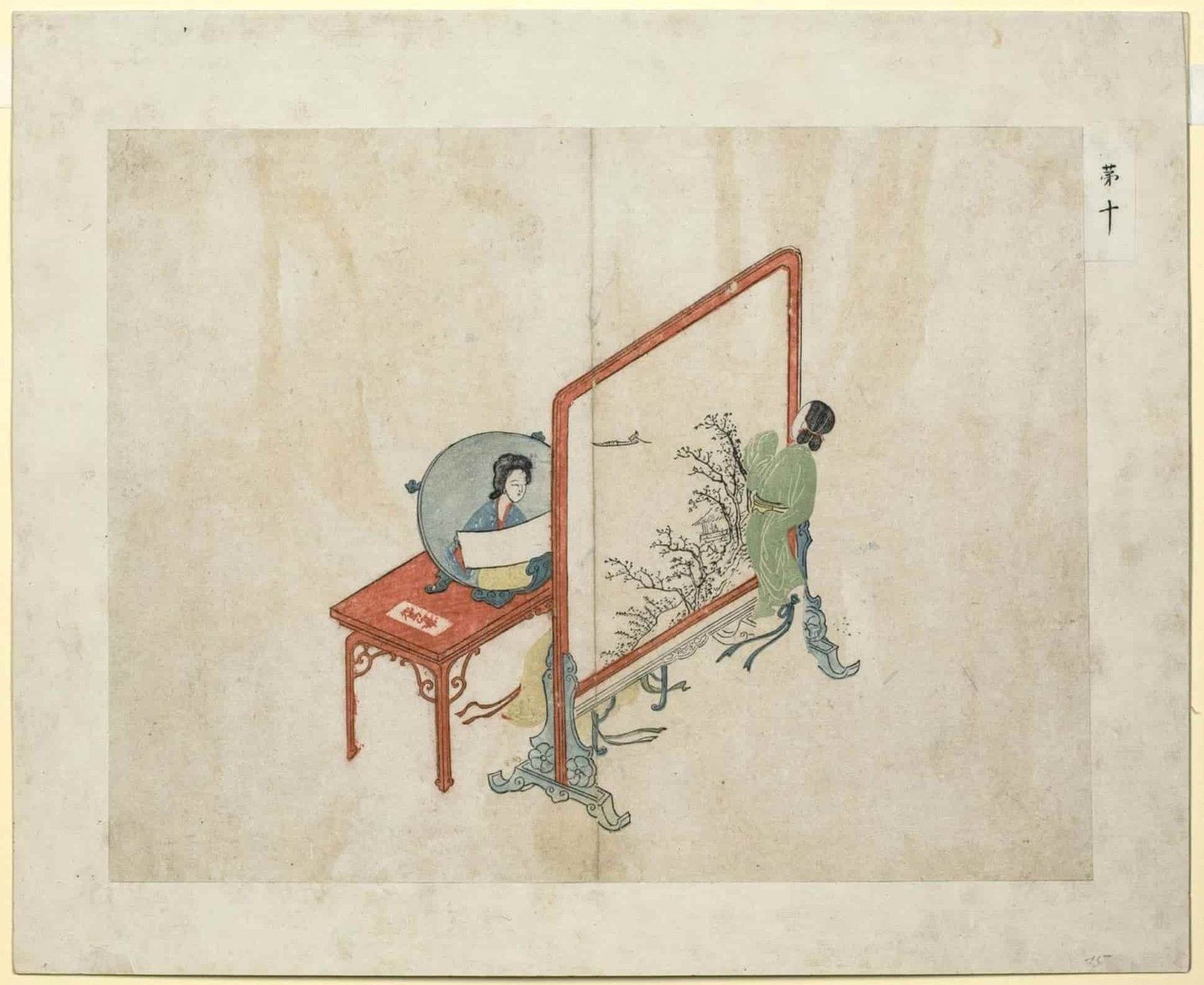
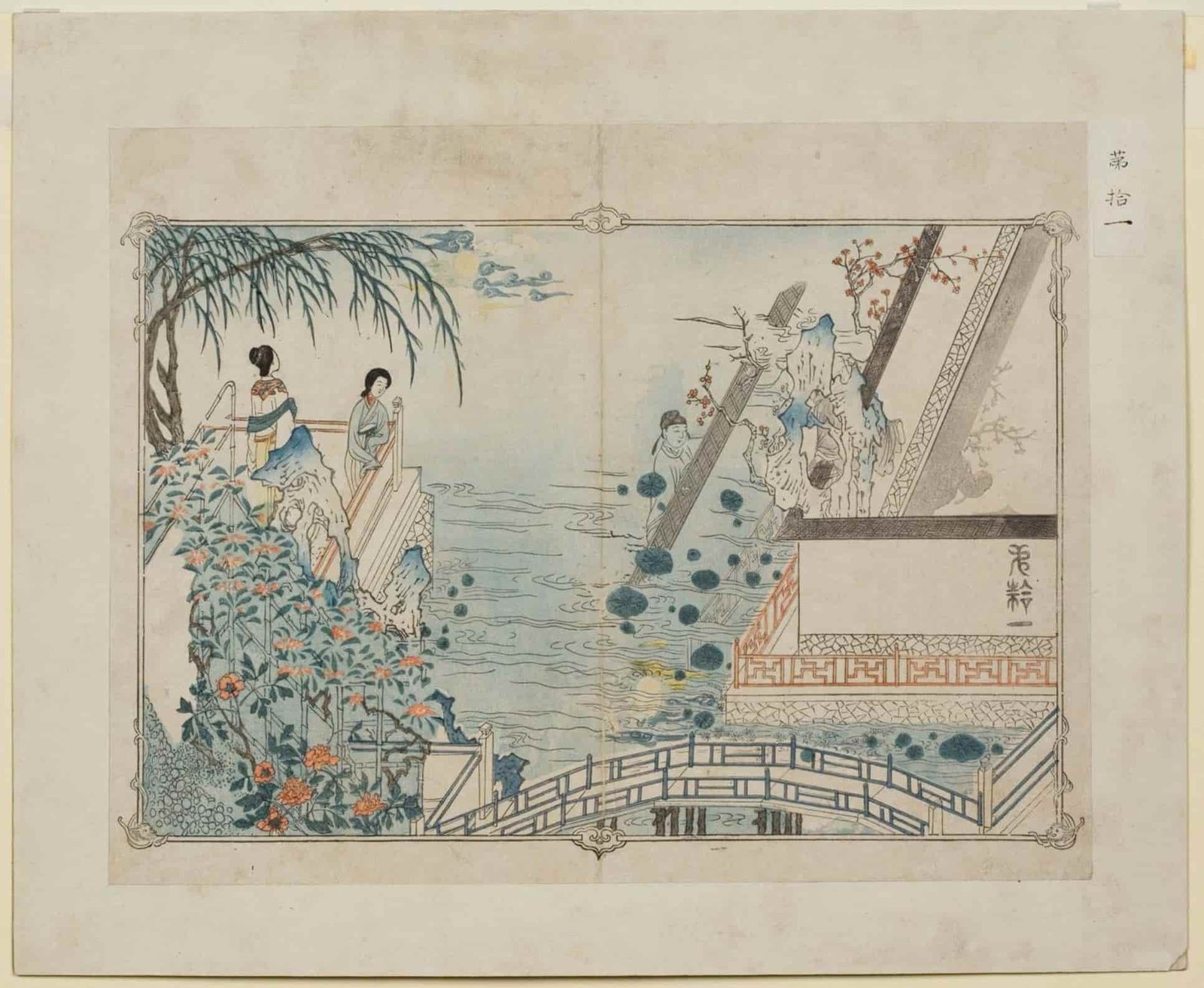
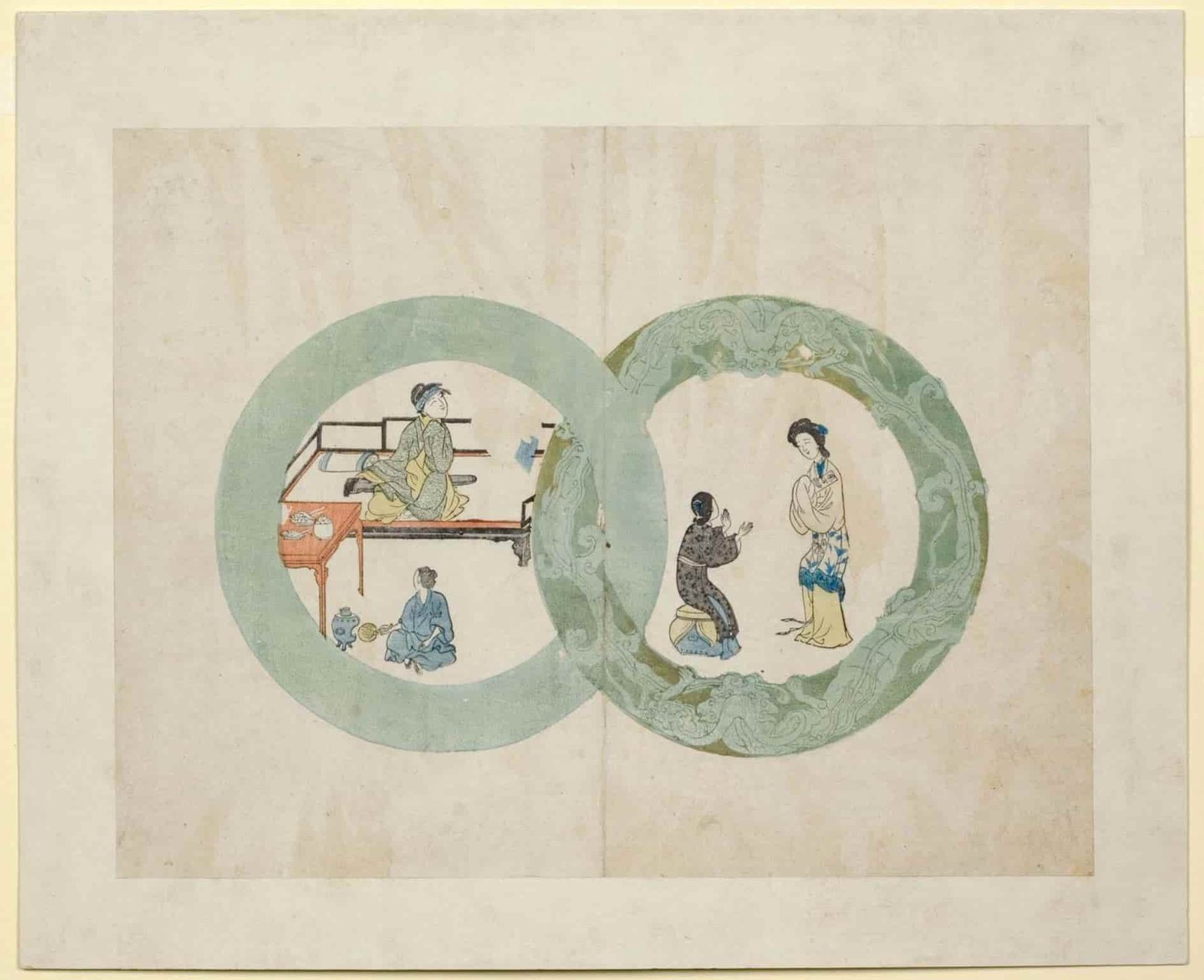
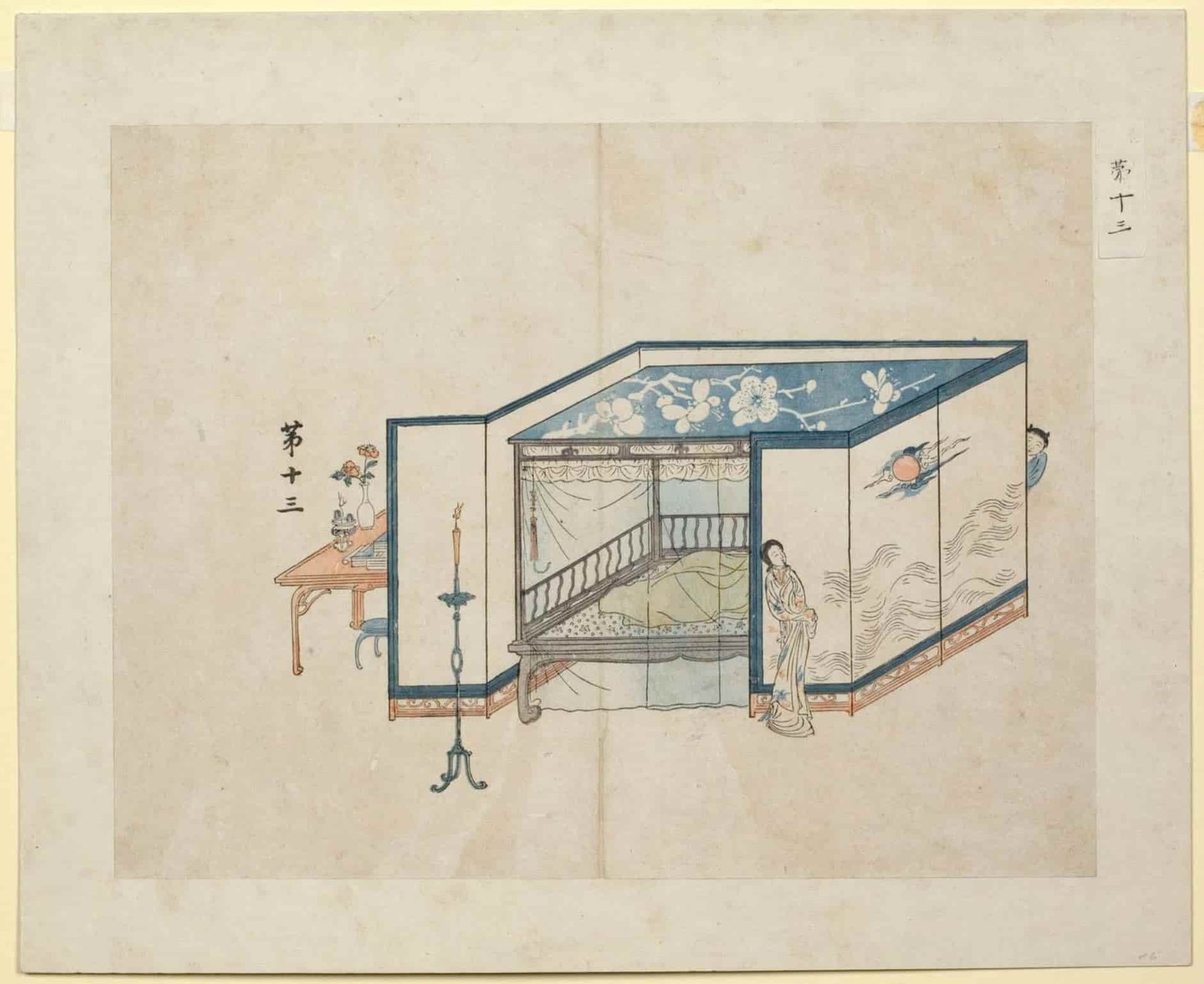
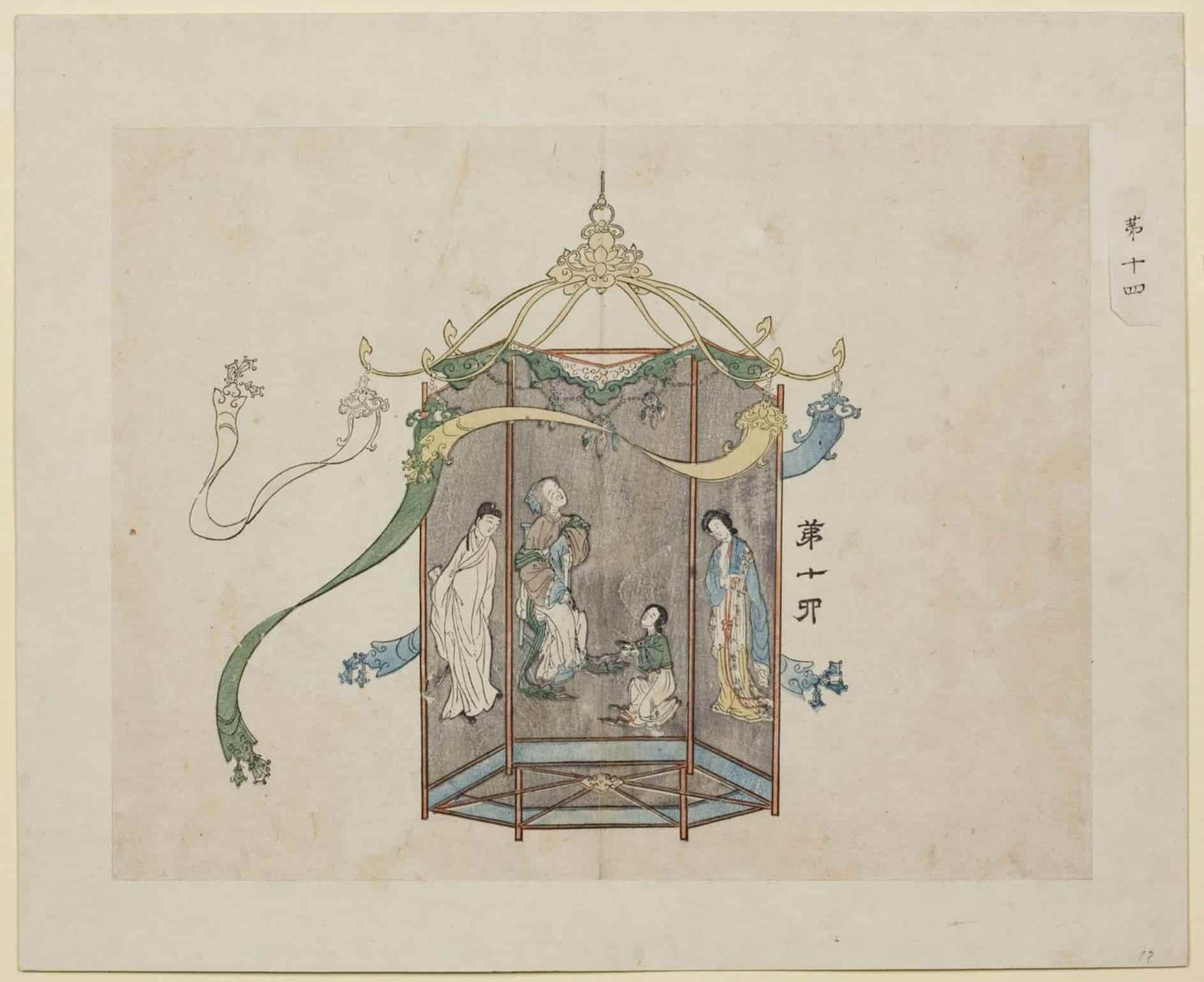
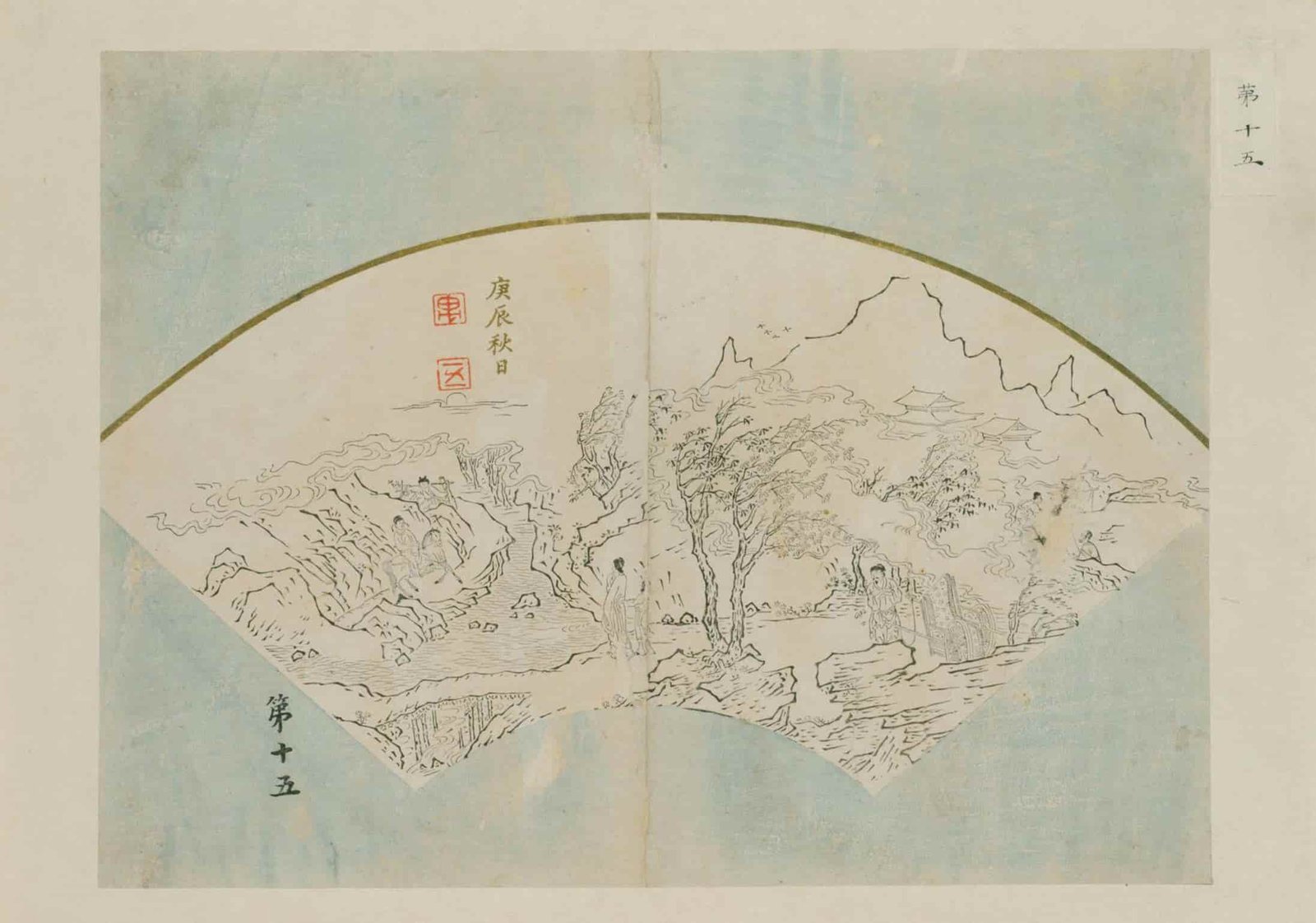
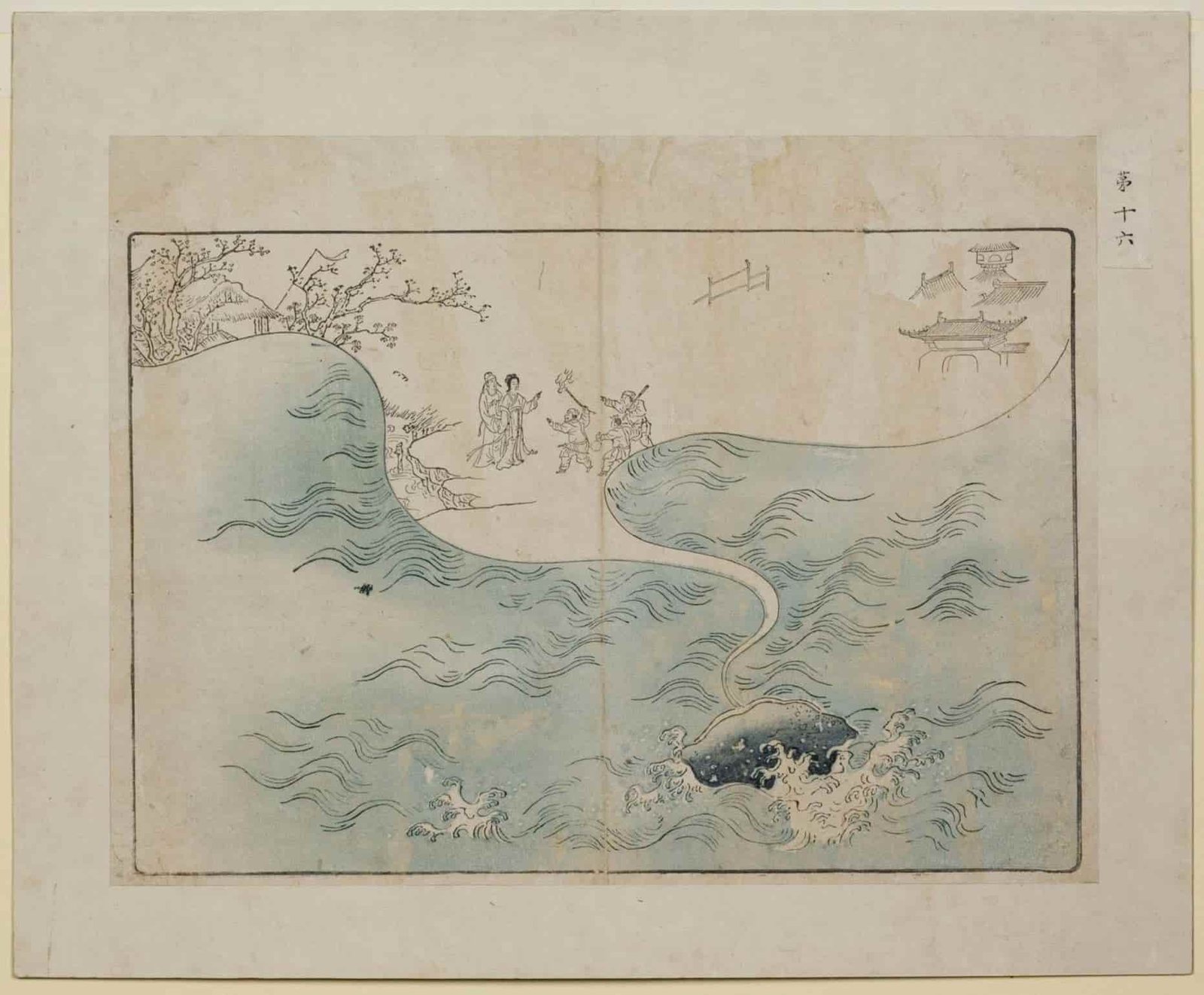
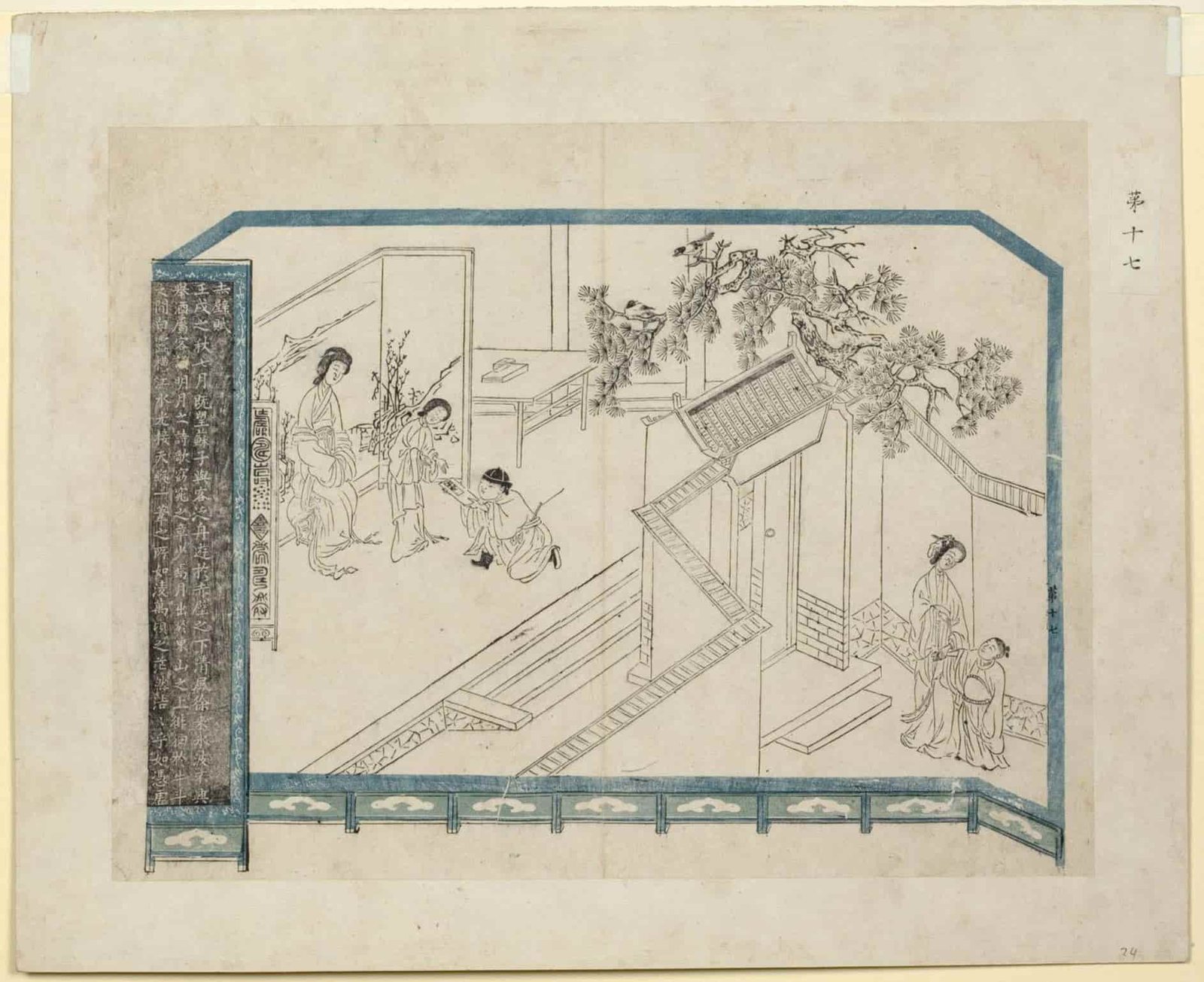
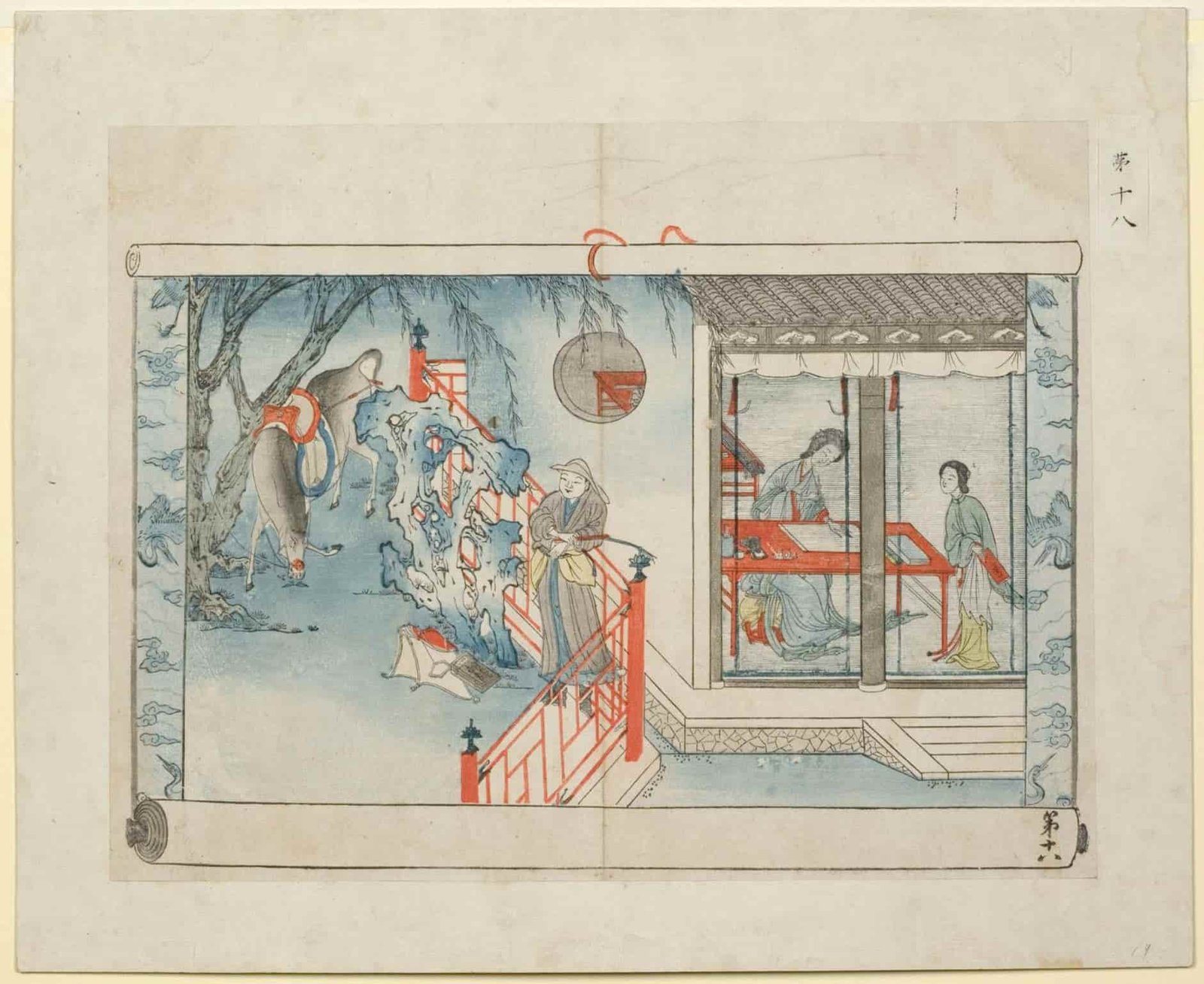
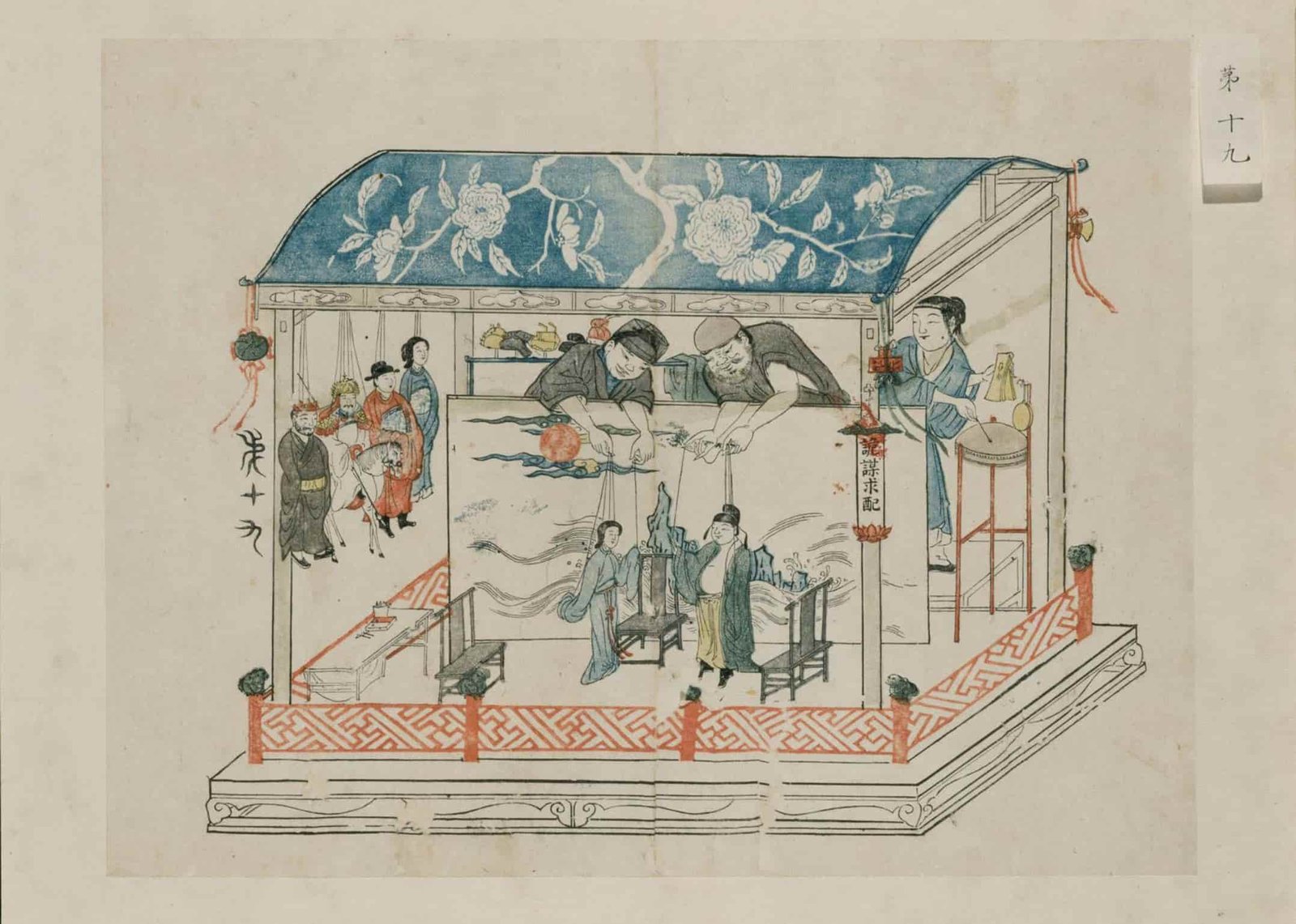
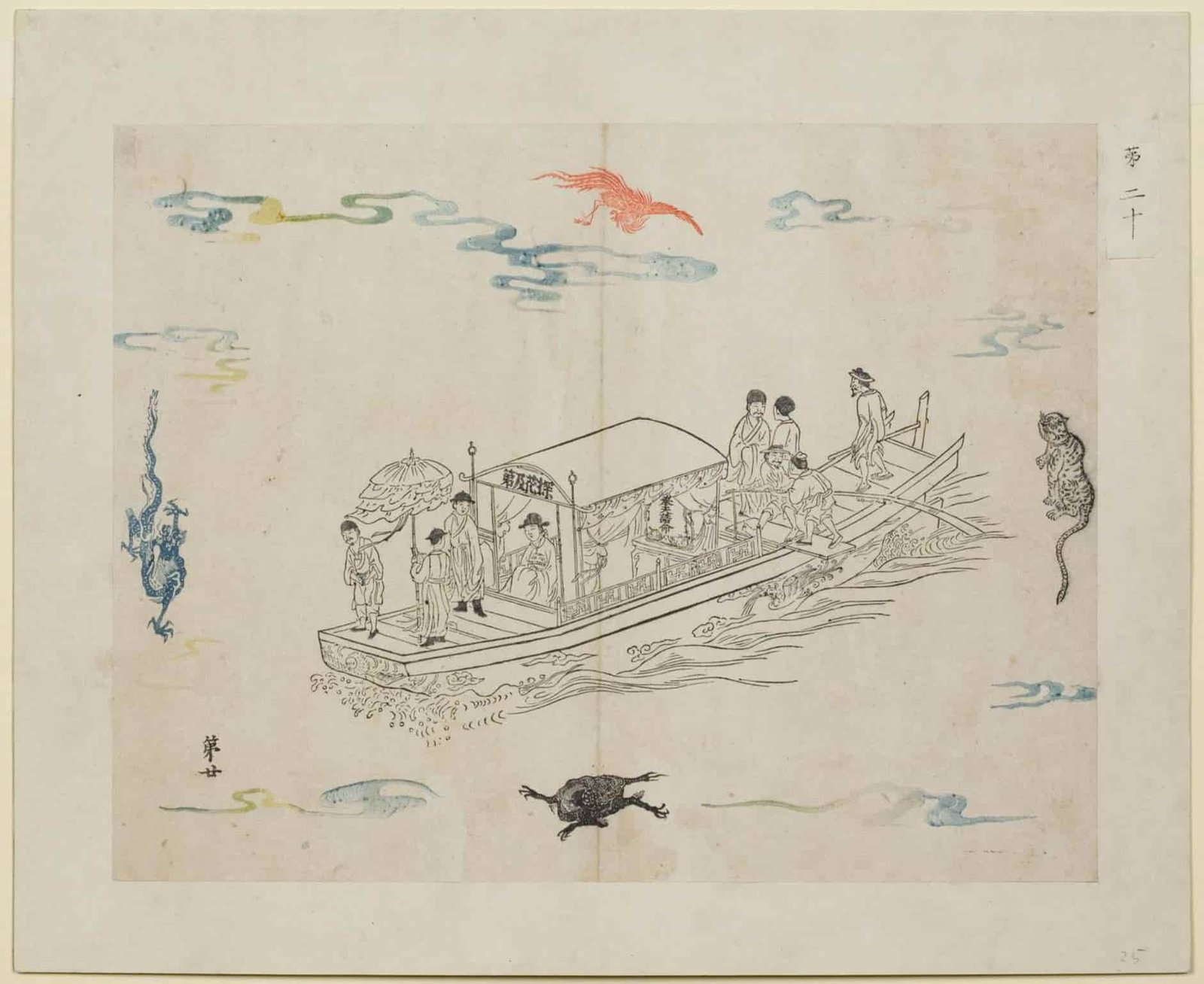
评价
目前还没有评价